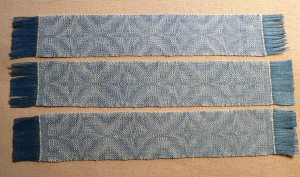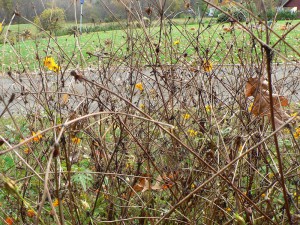After I spun up that modest quantity of linen singles yarn (the bleached Louet top I wrote about last time), I got excited about planning a warp for it. I plan to use the handspun as weft. My current thought is to use the wet and dry spun yarns in alternating stripes in the weft. I think this will create stripes of different textures. But what to use for the warp?
I have a motley stash of naturally dyed linen yarns, including 20/1, 20/2 and 40/2 yarns. This project seemed like a good opportunity to use some of it. Since most of my dyeing consists of experiments and small batches, I don’t have a lot of any one color. So, I can’t make the whole warp from a single color, which obviously means I need stripes in the warp. Continue reading “Planning a Linen Warp”


